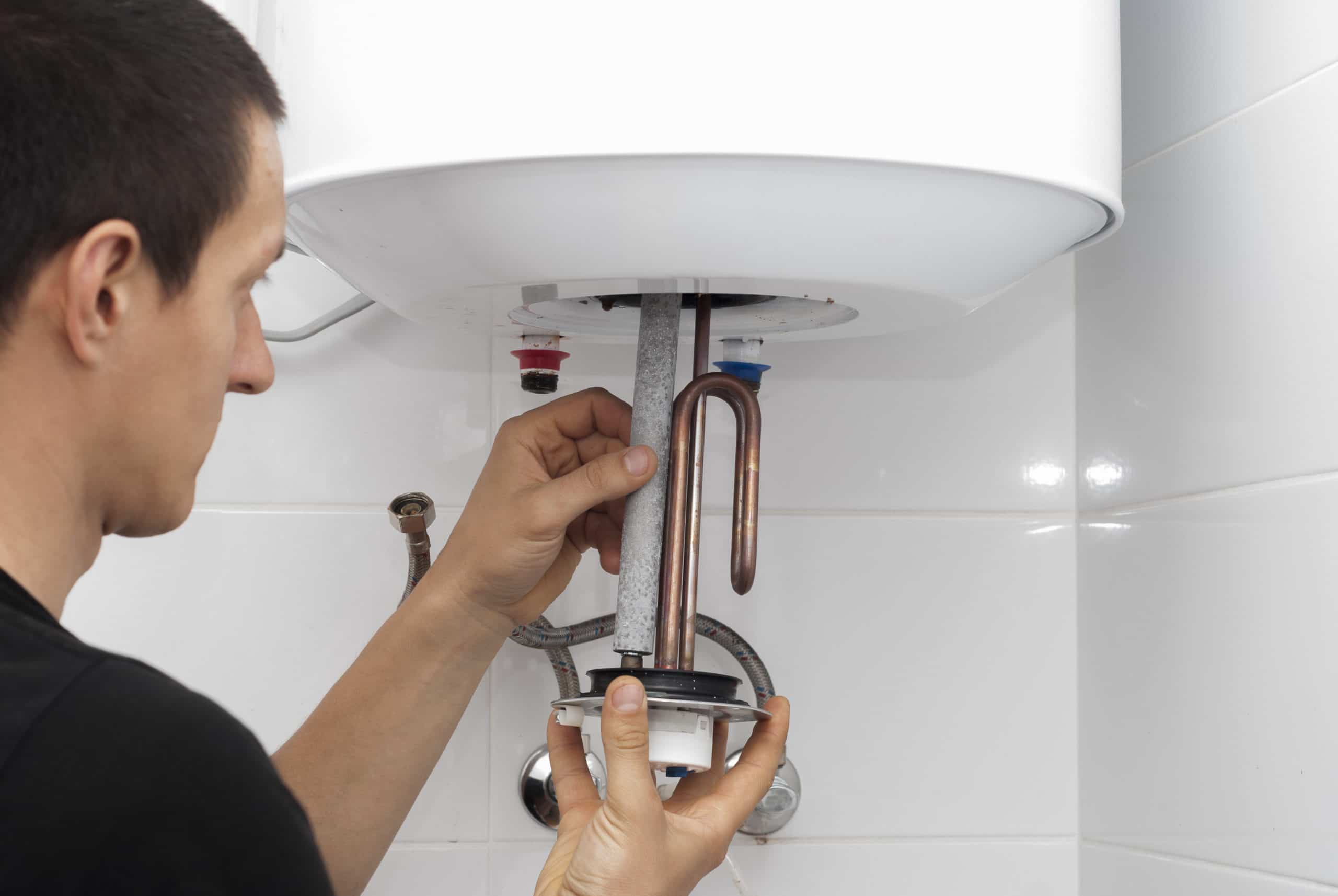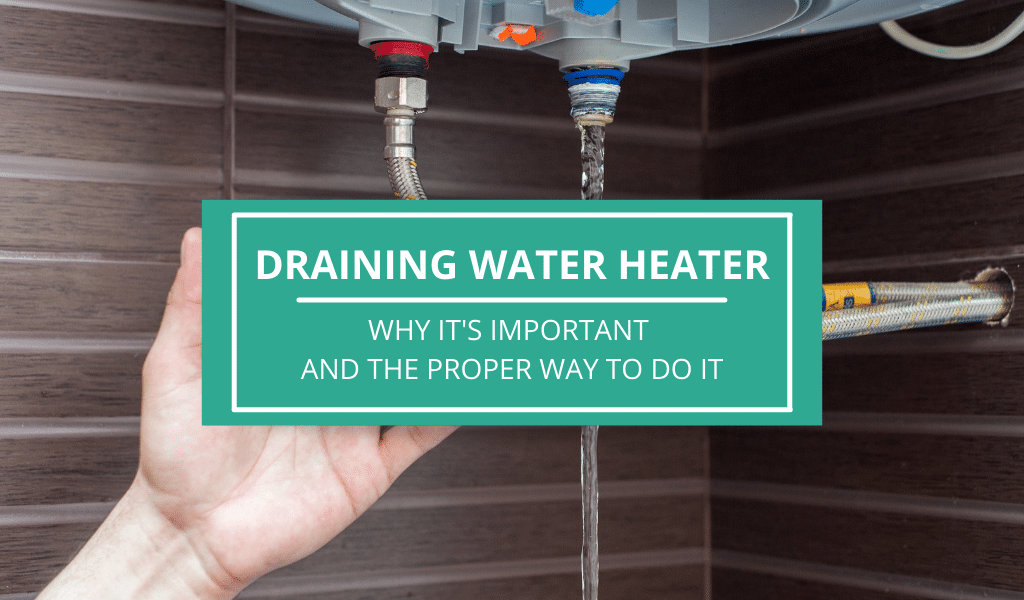A water heater helps to make our daily life easier and comfortable. However, proper maintenance is necessary to ensure its efficiency and durability. One important step of maintaining it is draining the water heater. So to help you understand why this is important and how to exactly do this, I enumerated in this article a step by step guide to make it easier for you.
If you are in a rush, here's a quick summary on how to do it: First, you have to attach a hose with the drain valve after turning off the electricity or gas. Then, let the water drain entirely by opening the pressure relief and drain valves. To flush away any leftover silt, switch on the water supply again. Then seal the valves, turn back on the power or gas, and you’re done.
However, if you want to do the job perfectly, you will have to know the details of doing each step. Even if you hire a professional for the work, it would be best to know the steps to make sure he is following proper procedure. So, I’ll go over the steps of draining a water heater, along with other information that I'm sure will be helpful for you.
Importance of Draining Water Heaters
To make sure that your water heater will continue to function properly, you need to drain it to eliminate the sediments that have accumulated in the tank.
Generally, sediments like clay, sand, magnesium, and calcium fall in the bottom of your water heater’s tank when the water heats up. Sediment build up occurs over time in every water heater, but depending on the water quality, some water heaters get more affected than others.

So, draining your water heater regularly will help flush out the sediments and extend the life of your equipment. On the other hand, the failure to get rid of the sediments can potentially damage your water heater.
In addition, the equipment will use higher energy and cost extra money to maintain in the long run. It may also cease to function entirely at some point. Thus, draining your water heaters is necessary if you plan on utilizing your water heater for a long time.
Steps of Draining a Water Heater
It is better to drain your water heater at least once every year to ensure its long lifespan. Thankfully, draining a water heater is a very simple task. Here are the steps of draining a water heater:
Step 1
Turn Off the Water supply, and Power or Gas Line
If you have an electric water heater, turn off the power supply first. But if yours is a gas water heater, turn the switch to the "pilot" position to avoid heating a vacant heater and gas leakage.
Now, you have to turn off the water supply valve. Generally, the valve is located on the upper right side of the water heater and controls the water flow rate of the water heater. However, if you fail to find the switch, read the instruction manual or search online.
Step 2
Connect a Hose to the Drain Valve
You will find the drain valve at the bottom of your water heater. You have to align a regular garden hose with the drain valve’s threads and attach it by screwing it onto the drain valve. Well, try to ensure the hose is secured properly to prevent water from leaking out.
Now, place the hose’s other end outside to allow the water to safely drain. Also, make sure the hose’s end is below the level of the heater’s drain to allow water to flow freely.
Step 3
Open the Drain Valve and Pressure Relief Valve
Now, it’s time to open the drain valve and pressure relief valve. Open the drain valve by turning the knob or lever.
However, you might require a screwdriver for turning the knob of the drain valve. Also, let air pass through the valve and drain the water by opening the pressure relief valve too.
Step 4
Let the Water Drain and Open the Water Valve
Wait and let the water drain properly. Well, as sediment can build up in the bottom of the water heater, it’s critical to rinse it out with fresh water.
So, once the water heater is empty, turn on the water valve and let clean water flow for a few minutes.
Step 5
Close the Valves and Disconnect the Hose
Once it starts to run clear water, close the drain and pressure relief valve. It is critical to close both the valves tightly to prevent leaks when you turn the water heater on.
After that, remove the garden hose from the drain valve by unscrewing it. Bring it outdoors and empty any water inside to prevent mold from growing and causing damage.
Step 6
Restart the Water Heater
Turn on the power again if it is an electric water heater. And, if it is a gas water heater, turn the pilot light on.
Now, restart the water heater by turning on the water supply line. Open hot water taps and check if your water heater is working properly.
How Long Does It Take To Drain A Water Heater?
Generally, it takes about 15 to 20 minutes to drain a water heater based on its size, condition, and few other factors.
Well, it takes about 5 minutes to drain a 50-gallon water heater. However, the water flow rate is a considerable factor here. You can drain the tank in less than five minutes if your flow rate is 10 GPM. It may take longer to drain water if the flow rate is slow. On the other hand, draining a 40-gallon tank with the same flow rate will take around 3-4 minutes.
However, sediment accumulation might reduce the flow rate at any time. Rust and particles have a hard time flowing out from the pipe. Thus, draining the water could take longer.
It’s critical to clear the dirt and debris before running the drain.
You can install a pressure relief valve on the water heater to drain it more quickly. The air pressure will help the water to flow freely. The more the pressure rises, the more quickly the water drains. So, the valve allows you to empty your water very fast and easily.
Should You Hire a Professional for Draining Your Water Heater?
You should hire a professional for draining your water heater as he/she will be able to do the job more properly and cautiously.
Although draining a water heater is not a difficult job, it is better to hire a professional to take care of it. Moreover, it is not necessary to drain your water heater frequently. Draining it once a year is enough. Thus, as you are only doing it annually, it is better to hire someone who has better experience of the job.

The cost of hiring a professional for taking care of the work is also not that high. It will cost you around $200 to hire a professional to drain your water heater. Besides, professionals have better knowledge of safety precautions. So, there is a lower chance of an accident taking place.
If you are confident that you can do the job properly, you can do it yourself. However, if the water heater has not been drained for a long time, it might be a bad idea to try to do it on your own. You might end up leaving a leak on the water heater.
And, remember, a large leak might necessitate the replacement of an older tank, which will be far more expensive than hiring a professional. So, it would be best to hire a professional to do the work. Moreover, you can also ask them to inspect the water heater and do other maintenance works once they arrive.
Conclusion
It’s critical to understand how to drain a water heater properly and safely. By now, you’ve already got to know the importance of draining a water heater, along with the steps of doing it. So, don’t forget to drain your water heater from time to time to ensure its proper functionality.
Thanks for reading through. Have a wonderful day!

